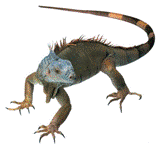Papers in the Biological Sciences

Papers in Herpetology
Document Type
Article
Date of this Version
4-2016
Citation
Rochford, M. R., K. L. Krysko, F. J. Mazzotti, M. H. Shirley, M. W. Parry, J. A. Wasilewski, J. S. Beauchamp, C. R. Gillette, E. F. Metzger III, M. A. Squires, and L. A. Somma. 2016. Molecular analysis confirming the introduction of Nile Crocodiles, Crocodylus niloticus Laurenti 1768 (Crocodylidae), in southern Florida, with an assessment of potential for establishment, spread, and impacts. Herpetological Conservation and Biology 11(1):80-89.
Abstract
The state of Florida, USA, has more introduced herpetofauna than any other governmental region on Earth. Four species of nonnative crocodilians have been introduced to Florida (all since 1960), one of which is established. Between 2000–2014 we field-collected three nonnative crocodilians in Miami-Dade County, Florida, and one in Hendry County, Florida. We used DNA barcoding and molecular phylogenetics to determine species identification and native range origin. Also, we described diet, movement, and growth for one crocodile. Our molecular analyses illustrated that two of the crocodiles we collected are most closely related to Nile Crocodiles (Crocodylus niloticus) from South Africa, suggesting this region as a source population. We, thus, documented the first known introduction of C. niloticus in Florida. Two, and possibly three of the introduced crocodiles shared the same haplotype, suggesting they are likely from the same introduction pathway or source. One animal was captured, measured, marked, and released, then recaptured 2 y later allowing us to calculate growth rate (40.5 cm/y) and movement. The most likely route of travel by waterway (i.e., canal) illustrates that this animal traveled at least 29 km from its original capture site. One crocodile escaped from a facility in Hendry County, Florida, and survived in 1,012 ha of semi-wild habitat for three to four years, confirming that this species can survive in southern Florida.
Included in
Aquaculture and Fisheries Commons, Genetics Commons, Integrative Biology Commons, Molecular Biology Commons, Molecular Genetics Commons, Other Ecology and Evolutionary Biology Commons, Population Biology Commons, Terrestrial and Aquatic Ecology Commons, Zoology Commons


Comments
Copyright © 2016. Michael R. Rochford